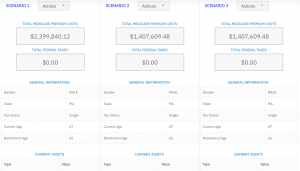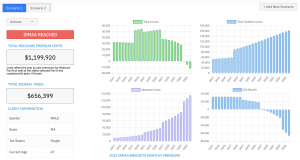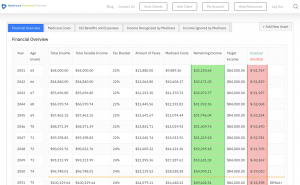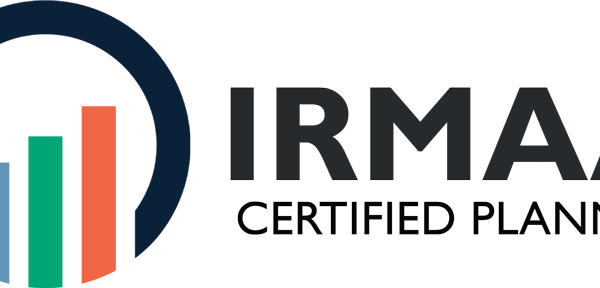As we approach 2023, understanding the intricacies of Medicare deductibles becomes increasingly important for financial professionals. With this in mind, our focus will be on demystifying various aspects related to Medicare plans and coverage choices available to retirees.
We’ll delve into the basic structure of Original Medicare consisting of Parts A & B, standalone Part D plan benefits, and the unique advantages offered by Medicare Advantage Plans. We aim to provide a comprehensive overview that aids in making informed decisions about these healthcare options.
Additionally, we’ll explore how income impacts monthly premiums through mechanisms like IRMAA (Income-Related Monthly Adjustment Amounts) and its bracket system. The role insurance firms play in communicating changes around medicare deductible 2023 is another critical area we’ll cover.
The impact prescription drug pricing has on overall healthcare expenditure will also be discussed along with details about maximum out-of-pocket limits under Advantage Plans. Moreover, legislative developments such as the Inflation Reduction Act can have potential impacts on future expenditures – an aspect you must keep tabs on while planning finances for your clients who are beneficiaries or soon-to-be beneficiaries of Medicare.
In conclusion, whether it’s understanding different types of offerings or supplemental coverages associated with medicare deductible 2023 – stay tuned as we unravel these complex topics step-by-step.
Understanding Medicare Plans and Coverage Choices for Retirees
When it comes to Medicare, retirees have options. Some go for basic Medicare with a standalone Part D plan for prescription drugs. Others prefer the all-in-one package of Advantage Plans.
Exploring Basic Medicare: Parts A & B
Basic Medicare consists of Part A for hospital coverage and Part B for outpatient care. It’s for those who want control over their healthcare providers or have supplemental insurance through retirement benefits.
Unraveling the Benefits of Standalone Part D Plan
A standalone Part D plan covers prescription drugs. It’s great for those who need regular medications. You can choose from a variety of options offered by private companies approved by Medicare.
Decoding the Advantages of Medicare Advantage Plans
Unlike basic Medicare, Advantage plans combine Parts A, B, and usually Part D. They also offer additional services like vision or dental. It’s like getting a comprehensive coverage package in one policy, reducing the hassle of managing multiple policies.
The Impact of Income on Monthly Premiums
As we approach 2023, let’s talk about how your income can mess with your Medicare premiums. Brace yourself for income-related surcharges, or as I like to call them, the “IRMAA” – Income-Related Monthly Adjustment Amounts.
Defining IRMAA – What Is It?
IRMAA is like an extra fee that sneaks into your monthly premium if your income is higher than a certain threshold set by the Social Security Administration. It doesn’t discriminate – it applies to all parts of Medicare, from Part A to Part B and even prescription drug coverage.
Understanding How IRMAA Brackets Work
IRMAA charges aren’t just random numbers. They fall into specific brackets based on your income. Higher incomes will result in increased premiums, compared to those with lower incomes. It’s like a tiered system that hits your wallet where it hurts.
Just remember, these thresholds can change every year, thanks to the Inflation Reduction Act and other fancy legislative stuff. And hey, speaking of fancy, prescription drug prices are skyrocketing, especially for covered insulin products. So, be prepared for potential changes in future healthcare costs.
The Role of Insurance Firms in Communicating Changes
As we approach 2023, changes are expected in healthcare costs under various Medicare plans. Insurance firms, like Boomer Benefits, play a crucial role in communicating these changes. It’s like having a healthcare translator for retirees.
Importance of Clear Communication from Insurance Firms
Insurance firms must communicate changes effectively, so Medicare beneficiaries know what they’re getting into. Nobody enjoys being taken aback, particularly with regards to medical expenses.
- Income-related surcharges: These sneaky charges, known as Income-Related Monthly Adjustment Amounts (IRMAA), kick in if your income is above a certain threshold. It’s like a secret tax for higher-income earners.
- Different premium tiers: The more you make, the more you pay. It’s like a VIP club, but instead of getting fancy perks, you get higher monthly premiums. Fun, right?
- Navigating legislative developments: Keeping up with the ever-changing laws and regulations is like trying to solve a Rubik’s Cube blindfolded. But insurance firms, like Boomer Benefits, have got your back.
Insurance firms, like Boomer Benefits, don’t just provide coverage. They’re like healthcare superheroes, helping retirees understand the ins and outs of Medicare. They make sure you know the difference between original Medicare and advantage plans, and they’ll even break down the basics of Parts A & B. It’s like having a Medicare dictionary in your pocket.
Prescription Drug Pricing and Its Impact on Healthcare Expenditure
The cost of prescription drugs can be exorbitant, leading to a significant burden on healthcare expenditure. They have a knack for making your bank account cry, especially if you need them on a regular basis.
The High Price of Prescription Drugs
Let’s face it, prescription drugs can be expensive AF. And guess what? They’re not getting any cheaper. According to KFF, in 2023 prescription drugs made up a substantial 14% of overall Medicare expenses. That’s a lot of dough.
But wait, there’s more. A lot of Medicare users have to spend at least five hundred dollars every year for their medications. Ouch. That’s like paying for a fancy dinner every month, but without the delicious food.
So, what can you do to avoid breaking the bank on prescription drugs? Here are a couple of options:
- Original Medicare: If you’re rocking Original Medicare, you can get yourself a standalone Part D plan to cover most outpatient prescription drugs. Beware, Original Medicare doesn’t provide a limit to your out-of-pocket expenses, unless you have some supplemental coverage (Medigap).
- Medicare Advantage Plans: These bad boys usually include coverage for most outpatient prescription drugs and come with an annual maximum limit on out-of-pocket costs. It’s like having a safety net for your wallet.
So, don’t let prescription drug prices give you a heart attack. Explore your options and find a Medicare plan that won’t leave you crying over your monthly bills.
Maximum Out-of-pocket Limit Under Advantage Plans
In 2023, Medicare Advantage plans have an out-of-pocket limit of $8,300 for in-network services. Basic Medicare doesn’t have this cap because it likes to live life on the edge.
Maximum Out-of-Pocket Limit – An Important Factor In Financial Planning
When it comes to managing healthcare and planning for the future, having an understanding of potential expenses is just as crucial as memorizing the words to your favorite tune. The maximum out-of-pocket limit under Medicare Advantage plans gives you a clear idea of how much you might have to spend during any benefit period.
It’s not just about peace of mind, though. Understanding your maximum possible healthcare expenditure helps you make smarter financial decisions. You can plan your emergency fund, adjust your lifestyle, and even decide how many lattes you can afford at Starbucks.
So, take a moment to explore the maximum out-of-pocket limits of different Medicare Advantage Plans. It’s like having a financial superhero by your side, guiding you through the complexities of retirement health care planning.
As financial professionals, we’re not just number crunchers. We’re here to help you navigate the financial maze and enjoy your golden years without worrying about unexpected medical expenses. Because retirement should be all about relaxation, not panic attacks.
The Inflation Reduction Act: Lowering Costs for Medicare Beneficiaries
Great news for Medicare beneficiaries – the Inflation Reduction Act is here to reduce healthcare costs. The Inflation Reduction Act is here to save the day and lower healthcare costs for Medicare beneficiaries. Say goodbye to those sky-high prices for prescription drugs, including insulin products – a lifeline for millions of Americans with diabetes.
Targeting Prescription Drug Pricing
Prescription medications have been skyrocketing in cost, creating a major source of worry for individuals and their bank accounts. But fear not. The Inflation Reduction Act is stepping in to tackle this issue head-on. It’s time to put a leash on those outrageous costs and bring some much-needed relief to our healthcare system.
One area where this act really shines is in the realm of insulin products. With around 34 million Americans relying on insulin to manage their diabetes, it’s about time we put an end to the price gouging. This act ensures that individuals can access the necessary medications to maintain their wellbeing without breaking the bank.
Capping Insulin Costs at $35 per Month
Starting July 1st, the Inflation Reduction Act is putting a cap on the cost of covered insulin products. That’s right, folks – no more breaking the bank just to stay alive. For a mere $35 per month, you can get the insulin you need without emptying your pockets. It’s a game-changer for those managing chronic conditions like diabetes.
So, what does this mean for you? Well, it means you can finally breathe a sigh of relief knowing that your out-of-pocket costs for insulin are going to be a whole lot more manageable. And if you’re not already doing a happy dance, you should be.
Remember, it’s important to stay informed about these changes and how they affect your Medicare plan. So, reach out to your insurance firm, like Boomer Benefits, and get the lowdown on all the juicy details. They’ll help guide you through the ins and outs of Medicare, making sure you’re getting the most bang for your buck.
Key Takeaway:
The Inflation Reduction Act is here to lower healthcare costs for Medicare beneficiaries, particularly when it comes to prescription drug prices like insulin. This act puts a cap on the cost of covered insulin products at $35 per month starting July 1st, providing much-needed relief for those managing chronic conditions like diabetes. It’s time to say goodbye to price gouging and hello to more manageable out-of-pocket costs.
Understanding Different Types of Medicare Plans and Supplemental Coverages
Don’t fret, we’ve got you covered with the complexities of Medicare. Comparing Original Medicare to a Medicare Advantage plan is like opting for a plain hamburger or one with all the fixings. Original Medicare (Parts A and B) gives the basics for hospital care and out-patient services, while Advantage Plans (Part C) add on extras such as prescription drug coverage, vision, dental etc.
Differentiating Between Original Medicare and Advantage Plans
Original Medicare is like the bare essentials package, covering hospital care and outpatient services, but leaving out prescription drugs and some other expenses. Advantage Plans, on the other hand, are like the deluxe package, bundling Part D prescription drug coverage with additional benefits like gym memberships and wellness programs. Plus, Advantage Plans have a cap on out-of-pocket costs, so you won’t break the bank.
Now, let’s talk about supplemental coverages, also known as Medigap. These policies are like the cherry on top, filling in the gaps left by Basic Medicare. These policies provide a layer of protection against unexpected expenses, helping to safeguard your finances in later life.
The Importance of Staying Updated on Legislative Developments
It’s not just about choosing the right plan, it’s also about staying in the know. Legislative developments, like the Inflation Reduction Act, can have a big impact on your Medicare experience. This act aims to lower the cost of prescription drugs, including those pricey insulin products. Starting July 1st, covered insulin products will be capped at $35 per month, providing much-needed relief for those managing chronic conditions like diabetes. Stay informed and save some dough.
Learn more about The Inflation Reduction Act here.
Key Takeaway:
This section explains the difference between Original Medicare and Medicare Advantage plans, with Original Medicare providing basic coverage while Advantage Plans offer additional benefits like prescription drug coverage. It also highlights the importance of staying updated on legislative developments, such as the Inflation Reduction Act, which aims to lower the cost of prescription drugs for those managing chronic conditions.
Conclusion
Understanding Medicare plans and coverage choices for retirees is crucial, because let’s face it, healthcare expenses can be a real headache.
Basic Medicare consists of Parts A & B, but if you want prescription drug coverage, you’ll need to look into standalone Part D plans.
And hey, if you’re looking for some extra benefits beyond basic Medicare, check out Medicare Advantage plans.
But hold on, your income can actually impact your monthly premiums through the fancy-sounding Income-Related Monthly Adjustment Amount (IRMAA).
Oh, and don’t forget about those insurance firms, they play a vital role in keeping beneficiaries in the loop about any changes.
Now, let’s talk about prescription drug pricing, because let’s be honest, it can really break the bank. But hey, there’s some good news! The Inflation Reduction Act might just lower costs for certain drugs, like insulin products, starting July 1st, 2023.
Table of Contents:
- Understanding Medicare Plans and Coverage Choices for Retirees
- The Impact of Income on Monthly Premiums
- The Role of Insurance Firms in Communicating Changes
- Prescription Drug Pricing and Its Impact on Healthcare Expenditure
- Maximum Out-of-pocket Limit Under Advantage Plans
- The Inflation Reduction Act: Lowering Costs for Medicare Beneficiaries
- Understanding Different Types of Medicare Plans and Supplemental Coverages
- Conclusion
Streamlining the Medicare Surcharge Calculation Process.
Our Healthcare Retirement Planner software is designed to streamline the retirement planning process for financial professionals. By providing an efficient way to calculate IRMAA costs, our tool helps you save time and focus on other aspects of your clients’ retirement plans.
- Faster calculations: Our software quickly calculates IRMAA costs based on your client’s income and tax filing status, eliminating manual calculations and potential errors.
- User-friendly interface: The intuitive design of our platform makes it easy for financial professionals to input data and generate results with minimal effort.
- Data integration: Seamlessly integrate our calculator into your existing financial planning tools or CRM systems for a more streamlined workflow.
- Easy to Understand Reports: Export reports to easily share with your clients
- Tax and Surcharge Modeling: see how different types of income affects both taxes and your surcharges.
In addition to simplifying the calculation process, using our Healthcare Retirement Planner can also help improve communication between you and your clients. With clear visuals that illustrate how IRMAA costs impact their overall retirement plan, you can effectively convey complex information in an easily digestible format. This enables clients to make informed decisions about their healthcare expenses during retirement while ensuring they are prepared for any potential changes in Medicare premiums due to income fluctuations. To learn more about how our software can benefit both you as a financial professional and your clients’ retirement planning experience, visit the features page. Streamlining retirement planning processes can help financial professionals save time and resources, allowing them to focus on other areas of their clients’ needs. Automated calculation of IRMAA costs is the next step in streamlining this process even further.





